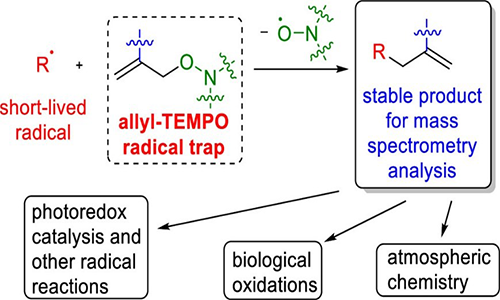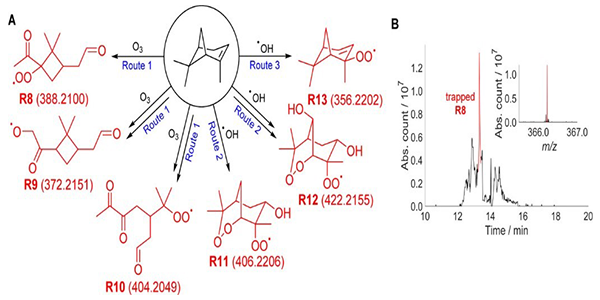New Approach to Detecting Reactive Radicals
Posted on Tuesday 11 October 2022
Short-lived ‘free radicals’ play a key role in many chemical processes, including the synthesis of drugs and polymers, in biological systems, and in reaction cycles that occur in the atmosphere. However, detecting these radicals is challenging due to their short lifetimes and low concentrations. Furthermore, in atmospheric field measurements, it can be difficult to detect radicals using existing techniques because of the need for highly complex equipment.
Commonly, in order to detect reactive radicals, they are trapped as more stable, longer-lived species. However, these methods can suffer from poor sensitivity, and in many cases, specific methods have to be employed to detect specific radicals.
In order to solve these problems, and develop a sensitive and general approach to radical detection Professor Victor Chechik working in combination with atmospheric chemists led by Dr Andrew Rickard has developed a landmark new technique for the detection of radicals that could potentially be applied in challenging environmental settings.

Figure one:Radical trapping by reaction wih an allyl-TEMPO trap.
These new radical traps enable the easy detection of most short-lived radicals (see Scheme). The approach is based on modifying a known radical trap (TEMPO) to create an innovative new allyl-TEMPO system. The key design feature here is that reaction of a short-lived radical with the trap releases the nitroxide radical and yields a stable, non-radical product. The stability of the non-radical product means that time can be taken to analyse and understand it offline, for instance using laboratory-based mass spectrometry, after the samples have been collected in a field campaign.
Professor Chechik says: “We have made radical detection much simpler by detecting a downstream non-radical product. Importantly, we can also easily modify the rate of the radical-trapping reaction, and the ability to detect the product, by subtly tuning the structure of the trap. This makes this approach hugely versatile – it can be applied to a wide range of different reactive radicals, as we demonstrated in the paper.”

Figure two: The reaction of a terpene with ozone, an important atmospheric process is complex and can go via many routes, the new radical detection approach allowed the researchers to detect a range of intermediate radicals simultaneously.
Dr Rickard adds: “We were delighted to demonstrate that this approach can be used to understand gas-phase atmospheric reactions, such as the ozonolysis of terpenes. As the figure shows, this is a complex reaction system, but it is an important atmospheric process, as terpenes are fast-reacting biogenic compounds emitted by forests. These reactions can potentially form multiple products in small amounts, and the ability to characterise these unambiguously demonstrates the potential of this approach in understanding atmospheric reaction mechanisms. We hope, in the future, to apply the methodology both in the lab and the field to uncover and understand new types of atmospheric reactivity.”
The research paper has been published in Journal of the American Chemical Society.
